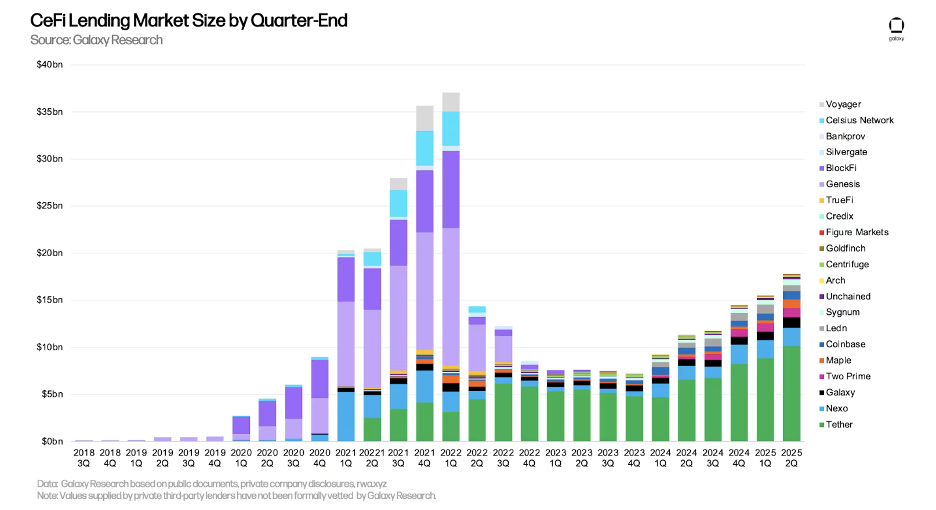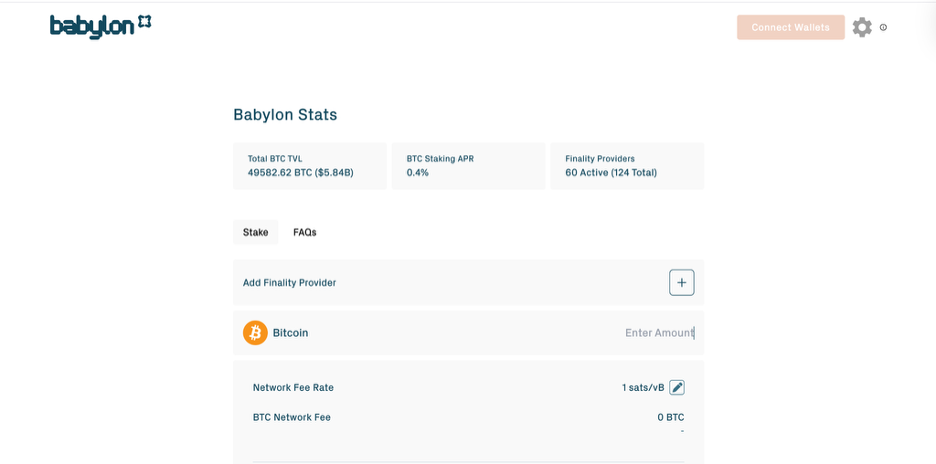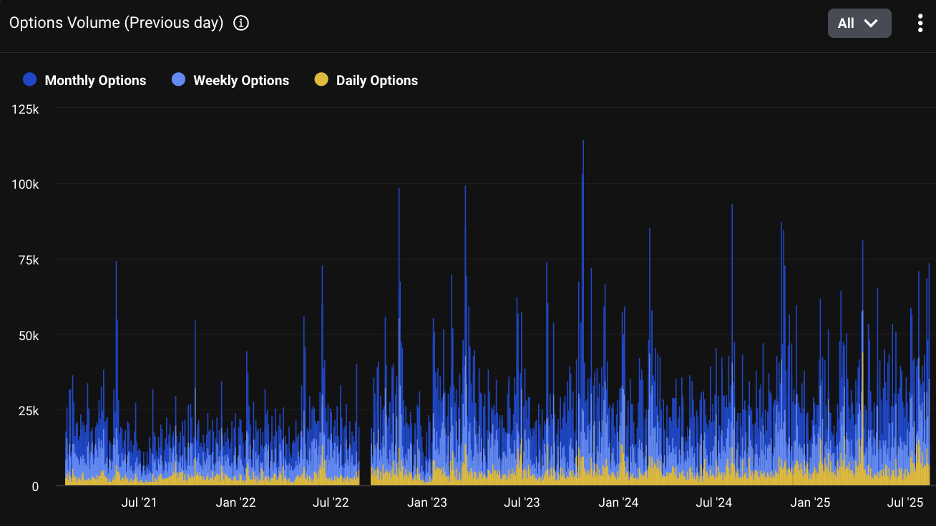As bitcoin grows increasingly mainstream and institutional, the importance of generating a return on bitcoin has also increased. Asset managers, bitcoin treasuries, and investors have begun to seek out methods for producing additional dollars or bitcoin. As financial engineering games of selling shares and debt, using public stocks, become increasingly difficult to sustain, groups need to find accretive methods of growing their asset base. At the same time, as bitcoin’s value becomes more widely recognized, large holders of BTC also want to avoid the risks, pitfalls, and hacks that have plagued the nascent asset in pursuit of a couple of percent additional return. There are both traditional and bitcoin-specific approaches to producing yield, with pros and cons to each. In this report, we will look at methods for generating a return on BTC at scale and how they compare.
The first rule of generating a return on BTC should definitely be: do not lose your BTC! If you’re reading this paper, you likely already believe that bitcoin is a highly valuable and unique asset with asymmetric upside. In the pursuit of a bit more upside, one should not sacrifice an asset that already has a high degree of expected return solely from beta exposure.
For institutions, limiting risk is no different than in traditional finance. Questions regarding counterparty risk, custodians, maximum downside, duration, and regulation remain relevant. If a product is offering extraordinary upside, you are surely sacrificing some of these protections in the process. Due to the technical complexity of bitcoin, it's easy for some products to shroud these risks in technical jargon. Be cautious. If something sounds too good to be true, it probably is.
Scale is also a major question for institutions. Approaches that work for 10 BTC may not work for 10,000. Understanding risks around slippage, impermanent loss, and time to unwind a position are all critical questions for large BTC holders.
There are three primary approaches to lending that involve BTC.
First, groups lend dollars with BTC as collateral that secures the loan. Typically, groups lend at 60-70% Loan-to-Value, meaning $10 million of BTC collateral will allow you to borrow $6 - $7 million USD. For those with cash balances looking to generate USD interest, this may prove attractive. In the event of a default, the bitcoin can either be liquidated or retained by the lender. Rates for these loans can vary from 5% to 15% depending on the size, custody, and duration of the loan. Though these are fairly safe loans due to the BTC securing the principal, the market does not treat them as such yet. Therefore, one can find added premium in lending dollars in this market.

Another approach includes lending unsecured BTC. These loans involve higher risk and are dependent on the credit and balance sheet of a counterparty. Typically, the interest is paid in BTC rather than USD. This can be either a low-risk or a very high-risk approach to yield. Ultimately, it comes down to the diligence and restrictions you place upon the borrower. Many blow-ups in the past, like FTX, BlockFi, and Celsius, largely stemmed from inappropriate, unsecured lending that ultimately landed them all in bankruptcy (and some individuals in jail). Conversely, lending dollars unsecured is a very common practice in traditional finance. If done with proper diligence, this is not completely unreasonable. Unsecured lending rates can vary from 3% to 7% depending on the counterparty, size, and duration.

Lastly, some groups lend BTC against BTC. This is typically to avoid tax consequences on low-basis BTC and instead trade borrowed BTC. These loans are typically done at 100% or 95% LTV. Because the asset is secured by the same asset, these are very low-risk loans and merit very low rates, typically around 1%.
Not all loans are created equal. The biggest question in the lending space is around rehypothecation. What is done with the BTC securing the loan during the duration of the loan? We encourage groups to steer clear of any form of rehypothecation, even with large institutions. It is attractive for the institution because they can make additional income by re-using your BTC, but the risk of losing your BTC is greatly increased with these practices. Are you willing to bet all your BTC on the decision-making of an employee of a different company that has different incentives than you?
Custody arrangements can either entail a transfer of BTC to the lending party or tri-party custody agreements. Tri-party custody allows the borrower to retain the BTC in their own account and allows the lender to claim the bitcoin only in the event of a default on the loan. This entails additional fees in most cases, but also greater security. A full transfer of BTC without tri-party custody will typically have lower fees. Some clients are comfortable with a segregated wallet address that can be observed and verified as holding the BTC without it being used without the additional protections of tri-party custody.
Depending on the type of loan, counterparty risk can be limited or substantial. If an overcollateralized loan or a 1:1 BTC loan, the lender can have security in the fact that they possess collateral to offset the risk of a default. In the case of an unsecured loan, counterparty risk is significant. The creditworthiness, balance sheet, and use of funds for the loan should be closely questioned and monitored. In some cases, funds can be lent in such a way that they remain on a trusted platform or can only be used in particular ways.
Often, we see groups aiming for yield and so conducting unsecured BTC lending. The BTC is then placed on DeFi platforms or traded in high-risk ways. This is the worst of all circumstances. The counterparty gets to capture most of the upside from high-risk trading, the lender has little clarity on what risk is truly being taken, and, in most cases, there’s little securing the loan. Sizing, duration, and recourse must be well-defined.
In summary, several factors influence lending. These products are popular, in large part because they are easily explained and mimic standard structures found in traditional finance. However, the devil is in the details. Understanding the balance between risk and reward - and selecting strong counterparties - will determine whether failure or success prevails. Loans should be low-risk. A focus on detail will ensure they are.
DeFi-based staking solutions pose another method for gaining a return on BTC. This approach comes with a broad array of technological risks that can be hard to identify and evaluate.
One popular approach is to create “wrapped” Bitcoin that can then be used on other blockchains. Examples of this are wBTC and cbBTC. In both cases, the BTC sits with a third-party, BitGo or Coinbase, for example, and an ETH-compatible copy of the BTC is generated. This can be placed at venues like Aave or in higher-risk, more esoteric protocols where it can be “staked.” Effectively, the assets are being re-lent to other users for the purpose of other trading strategies and leverage. There are layers of rehypothecation and risk here that can go really wrong if not evaluated carefully. From a regulatory perspective, these approaches are also hard to match with compliance rules.

Another popular approach is bitcoin staking platforms like Babylon and Stacks. In this approach, native bitcoin can be “staked” to the network in exchange for yield rewards. The bitcoin sent is used for “network security” or, in some cases, farmed out to a slew of other protocols looking for network growth and use. In essence, this is another method of lending out BTC to unknown counterparties with limited regulatory compliance. Rewards are also paid out via different “BABY” or “STX” tokens that can fluctuate in price and have limited long-term value.

In the case of wBTC and cbBTC, the custody remains with a third-party centralized custodian. If one’s goal is to maintain control of the asset, though these assets exist in the DeFi ecosystem, they are mediated via a standard third-party. In essence, you are layering on standard counterparty risk with added technological risk. In many cases, the yield is not greater than what can be found via more traditional approaches.
In the case of staking protocols with native staking, custody depends on the technology underlying the protocol, whether it is Babylon, Stacks, or another. If using this method, seek out longer-established protocols that have already survived without major failures.
The counterparty risk is significant in staking. There are layers of anonymous participants and hard-to-identify risks in the technology, financial models, and use of funds that can create both local and systemic failures within these ecosystems. Often, these protocols couch standard financial tools in technological jargon. This can make high-risk solutions sound banal. This is not by accident.
Returns on these protocols can vary from 1% to 25% or greater via methods of “looping,” aka leverage. If a protocol is offering outsized returns, it is paying for high-risk taking, even if it is not clear exactly how.
Another method of gaining “yield” or a return on BTC is a variety of trading strategies. These can include the standard range of methods found across all assets, spot and derivatives trades that capitalize on trend and mean-reversionary methods. A slew of data types and approaches to trading exist to satisfy different types of risk tolerances for clients. There’s a near-endless supply of firms claiming they can trade well. Key questions to consider include:
1. Scale - Does the strategy work in large sizes?
2. Track Record - How long has the strategy worked for? What is the Sharpe?
3. Discretionary or Systematic - Is this art or science?
4. Structure - Is it a Fund, an SMA, or something else?
5. Tax - What are the tax consequences of the trading? What are the tax consequences of entering a Fund if you already hold BTC with a low basis?
6. Fees - Are you paying for Alpha or Beta?
7. Reporting - What risk controls and transparency are provided?
8. Compliance - Is the firm regulated? SOC compliant? Audited?

BTC has excellent liquidity and is broadly traded. That being said, both spot and derivatives trading strategies have substantial sophistication and competition. Any group promising unbelievable returns should not be believed.
Be sure to ask where BTC is held during trading. In many cases, off-exchange custody is available. In this manner, custodians like Fidelity, Anchorage, and BitGo allow for funds to remain on their custody platform while an exchange can still credit the asset as collateral for trading. This is a preferred set-up and, for regulated entities, a qualified custodian is often a requirement.
If off-exchange custody is not being used, ensure you understand where the funds will be held, their security practices, and the regulatory implications of using that exchange. Ideally, assets would remain in bankruptcy-remote, segregated custody.
Depending on the trading method, the counterparty risk associated with earning a yield on bitcoin through this method can vary significantly. If assets are kept in off-exchange custody, the risk can be limited. On the opposite end, if funds are being traded via DeFi protocols, a broad range of technical, legal, and financial risks can be present. This poses tail risks in which high-returning strategies can quickly become complete losses.
Derivatives-based trading, cross-exchange arbitrage, and market-making strategies on centralized exchanges can produce consistent, high Sharpe returns in the range of 5% to 20%. The actual return will largely vary based on risk tolerance and can often be modulated. DeFi strategies with high risk can potentially yield returns as high as 50% (until they are all lost, at least). One should be more concerned with the Sharpe of a strategy above its stated return, as this is a function of sizing. Bear in mind that strategies with big tail-risk may appear to have a high Sharpe. The length of the track record and understanding what could cause a black swan event will be critical.
There are only two sustainable ways for businesses and treasuries to accumulate more bitcoin via finance: lending or trading. Like all of finance, there are different degrees of risk one can take to achieve different returns. The unique aspect of bitcoin lending and trading at present is that asymmetry exists between the perceived risk of an approach and the actual risk being taken. Those with expertise and strong diligence practices can benefit from this gap by filling the void. In general, Two Prime errs on the side of avoiding DeFi protocols, as they can often obscure risk in ways that are nearly impossible to assess and don’t offer a meaningfully greater upside. Though they are part of decentralized finance in theory, in practice, small groups of insiders control these protocols and can, and do, make unexpected decisions that can jeopardize invested principal. With the bright future of bitcoin ahead, those risks don’t seem worth taking for large holders of the asset. Proven methods of achieving yield through centralized trading and traditional lending enable greater insight into the risks being taken, the ability to adjust risk to achieve desired returns, and increased predictability.
Contact info@twoprime.com to learn more about institutional bitcoin yield strategies.